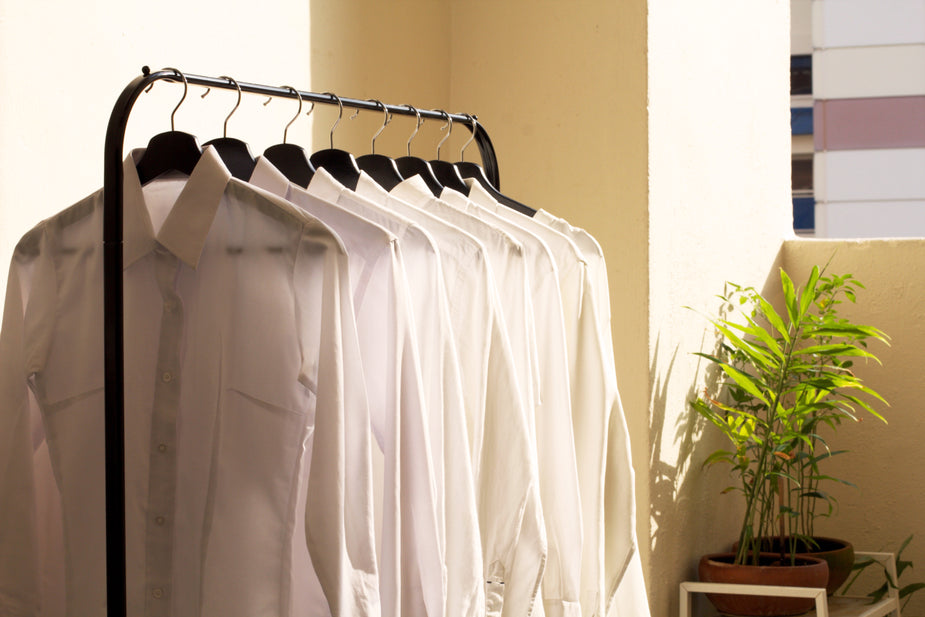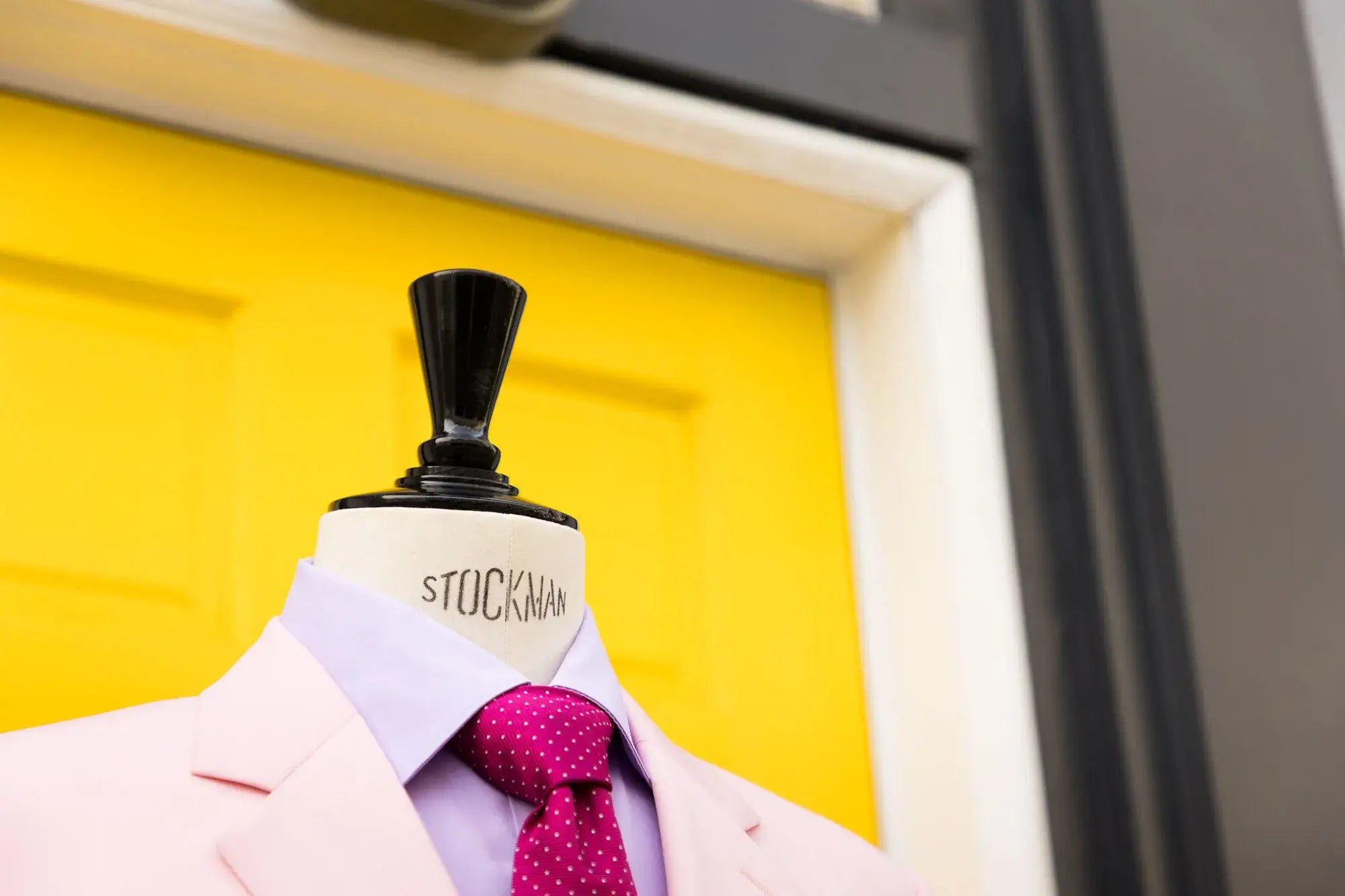
A problem that anyone involved in the fashion or apparel industry will encounter at some point is that the names of mannequins and torsos vary from company to company and person to person.
I, the writer of this article, was once asked by a brand representative when I was a new employee to "propose a body to be used in the store," and I enthusiastically proposed our own torso. But it turned out that they were actually asking for proposals for mannequins... (It's a funny story now, but at the time I was very nervous!)
I think it is a term that is used daily by VMD staff and shop staff. However, even among the manufacturers that actually sell them, the names and definitions are very vague. As a mannequin manufacturer, this is an issue that we cannot avoid, so this time I would like to explain it from the beginning.
The basic difference between a mannequin and a torso
To begin with, mannequins and torsos are considered store fixtures, and are "tools for displaying the whole body (torso) in a store or in a show window, with clothes, accessories, bags, etc. on it." They are primarily intended to be placed in front of a store or as a display tool, and serve as advertising and promotional tools to attract customers' interest and increase their desire to purchase.

Mannequin (French: Mannequin)
Mannequins are closest to the human form, have faces, limbs, and come in poses. Compared to torsos and hangers, they allow for three-dimensional display of products.
Torso (Italian: Torso) / Body (English: Body)
Both torso and body mean "torso" and are used interchangeably in Japan. Torso without arms or head is common, and compared to mannequins, the body itself can be displayed with less presence.
Should I use a mannequin or a torso?
You may be wondering which one to use when displaying in a storefront or show window. Both mannequins and torsos have their advantages and disadvantages, so choose the one that best suits your purpose and expression.

Benefits of mannequins
The defining feature of mannequins is that they have a life-size body. Since the entire body can be used to create a total outfit, it is possible to convey seasonal suggestions and brand images. In addition, because they are human-shaped, they are highly effective at attracting attention, and consumers who see the mannequins can easily imagine how they will be combined with clothes they already own and how they will look when worn, which is expected to increase purchase rates.
Disadvantages of mannequins
On the flip side, while you can coordinate your entire outfit, the appeal of each individual item is weak . For example, if you dress someone in pants without a top, it will look mismatched.

The benefits of torso
Torsoes are said to be easier to use than mannequins because they look good even when dressed in jackets and T- shirts alone. Recently, there are torsos that can be worn with pants, making it easier to create outfits than with mannequins. They don't take up much space, so they are effective when used in combination with a hanger rack. The head and stand can also be replaced, allowing you to customize the material and color according to your brand image and the world view of your store.
Disadvantages of a torso
Unlike mannequins, you cannot combine clothing accessories such as hats, glasses/sunglasses, earrings, and shoes, so you cannot show the breadth of your outfits. Also, because the torso itself does not move, it is not suitable for creating scenes such as sports or meeting up for a date.
Types of mannequins and torsos

"Real mannequin"
These mannequins are made to look like real people using wigs and makeup. When used in storefronts or show windows, they can leave a strong impact on viewers and create a display with a strong message. Although they are more expensive than abstract mannequins due to the makeup and wig production, they are still very popular with high-end brands, mainly in Europe and the United States, because they are excellent at expressing brand images and concepts.

"Abstract mannequin"
This is a mannequin with an abstract face. It is also called an abstract mannequin.
In Japan, due to the trend of cutting costs in stores, the number of mannequins has gradually increased since around 2000 , and it is now a commonly used type. Compared to real mannequins, it is less affected by age groups and images, so it is used by various brands.

"Sculpture Mannequin"
Between real mannequins and abstract mannequins, there is also a type of mannequin called a sculpture mannequin with a semi-realistic face and head. They are mainly used by European and American brands because they can be made to look impressive with a single color paint as well as with realistic makeup.

"Headless mannequin"
This refers to a mannequin without a head. It has a more subdued presence than an abstract mannequin. It is suitable for displaying fast fashion and wedding dresses that are popular with a wide range of customers, as it is easy to imagine how the item would look when worn.
[Headless mannequin product page is here]

"Display Torso"
Torso bodies are used for general display purposes. Compared to mannequins, they are made of a wider variety of materials, with fabric coverings and FRP (reinforced plastic) being the mainstream. Among torso bodies, those with arms and heads are called "bodies with arms" or "torso with head". There are also bodies for Japanese clothing, which can be used to dress people in furisode and kimonos.
[Display torso product page is here]

"Cutting body"
This refers to "bodies used in clothing production," such as industrial bodies for ready-to-wear clothing. They are used by apparel manufacturers, ateliers, and schools for three-dimensional cutting and fitting. In Japan, they are also called mannequins or forms. There are two types of bodies for cutting: "dress forms," which include slack for the production of ready-to-wear clothing, and "nude bodies," which use nude measurements without slack.
[Click here for the cutting body product page]
(Extra Edition) Unusual mannequins and torsos
"Cute chubby mannequin"
The fashion world is also moving towards diversity, with trends such as chubby cute and chubby-active. We developed chubby cute mannequins as a promotional tool for shops and department stores. They are used in displays by brands that cater to large size customers, and in clinics for treating edema.
[Click here for the chubby mannequin product page]
This product has been featured by Senken Shimbun, ORICON NEWS, and Yahoo! News!
Senken Shimbun: "Mannequins are also cute and plump in the new seven-color series"
ORICON NEWS: "Do mannequins need diversity? Asking a Japanese manufacturer about the evolution of body shapes"
Yahoo! News: "Mannequins praised for being "well-informed" and "close to the target audience" - what kind of "realistic" design is this?"

"Flexible mannequin"
A mannequin made of polyurethane as the core material. It can be bent into any shape, so it can be used to create a dynamic look for sports and athletic meets. It can be bent freely, so it can be used to create a variety of movements, but it is not suitable for creating a "heavy" or "luxurious" look.
[Click here for the Flexible Mannequin product page]
"Intimate (underwear) mannequin / torso"
Nanasai Co., Ltd. is part of the Wacoal Group, an underwear manufacturer, and so they make many mannequins designed to wear lingerie. They are particularly particular about poses that are conscious of beauty, comfort, and health, and about creating natural bust shapes, so they fit better than conventional mannequins and can beautifully highlight products.
[Click here for the intimate mannequin product page]
"Maternity mannequin / torso"
We carry mannequins and torsos for maternity, catering to the lifestyles of mothers who want to remain stylish even during pregnancy. We offer two types of belly sizes, 5 months and 8 months, to suit different body types and occasions.
[Maternity mannequin/torso product page is here]
"Look-alike mannequin"
In 1971 , Shichisai established the world's first FCR technique, which allows for the creation of a living human body from head to toe. Using this technique, they created a super-realistic mannequin of Taro Okamoto in 1975 , and the high level of reproduction drew much attention. Recently, they combined this technology with 3D scanning to create a mannequin that looks just like professional baseball player Ichiro.
This product was featured in Nikkei Cross Trendy!
Nikkei Cross Trendy: "Can we overcome the 'uncanny valley'? Frighteningly realistic mannequins"
How was it?
If you are unsure of how to use each one, or don't know which product is best suited for your company, please contact NANASAI ONLINE STORE .
With the perspective of a spatial design professional, we will offer a wide range of suggestions, from how to choose mannequins and torsos to original custom orders!








